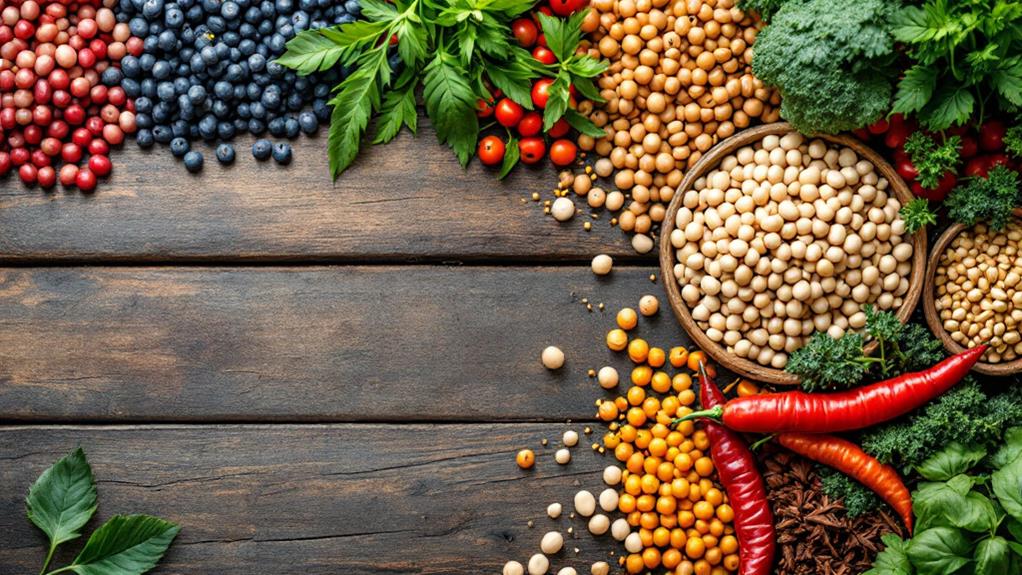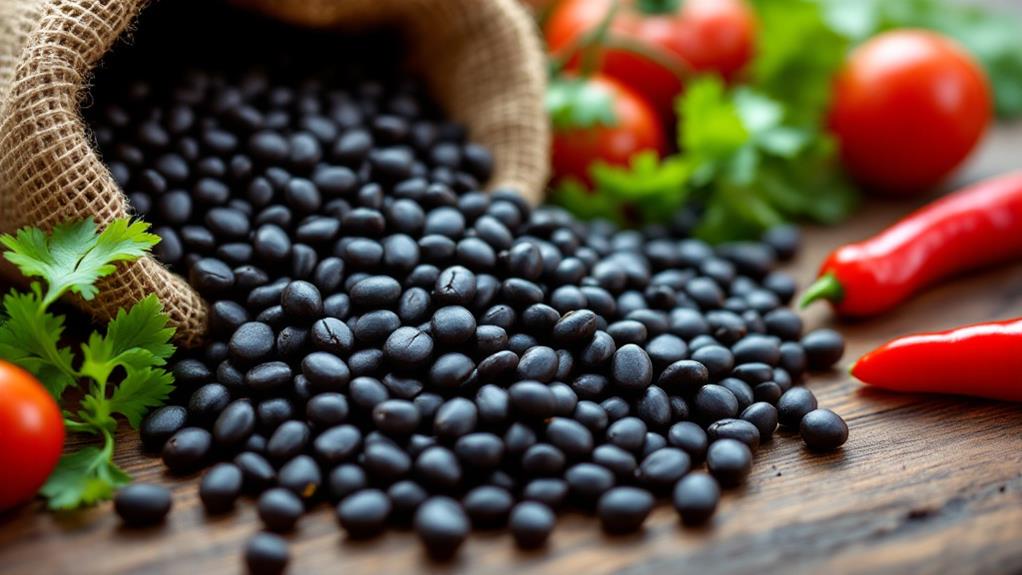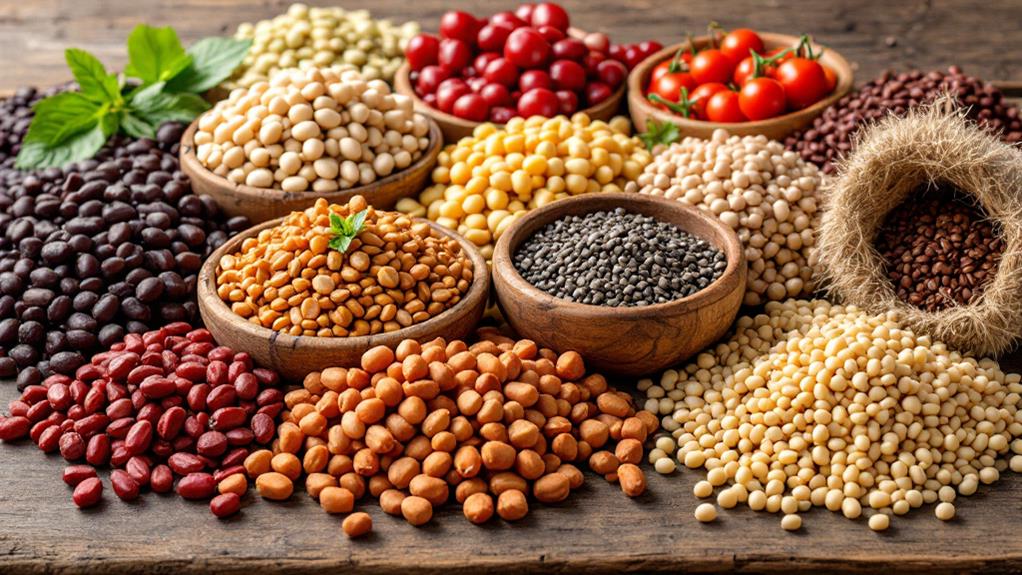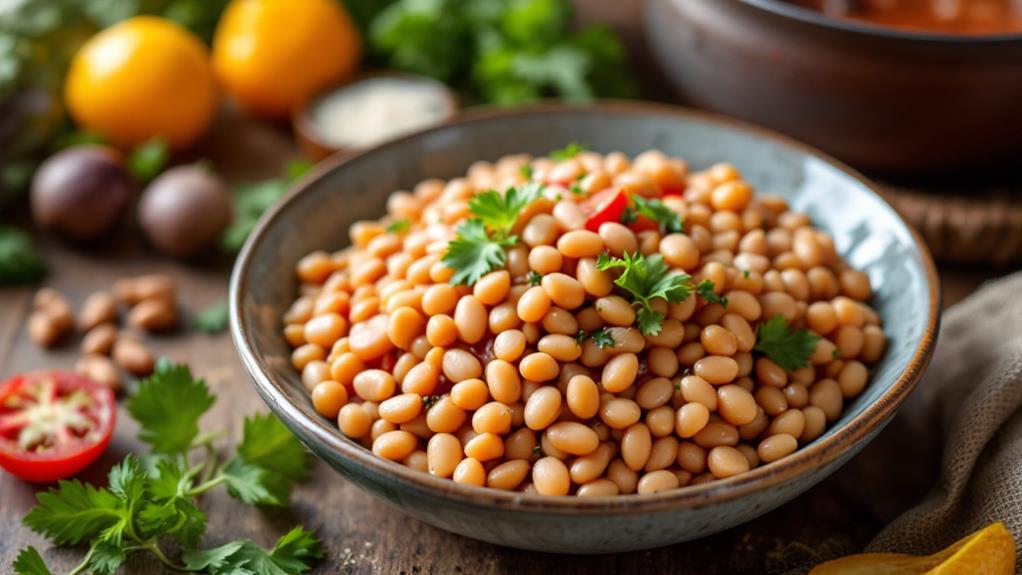Everything You Need to Know About Cranberry Beans: Nutrition, Benefits, and Recipes
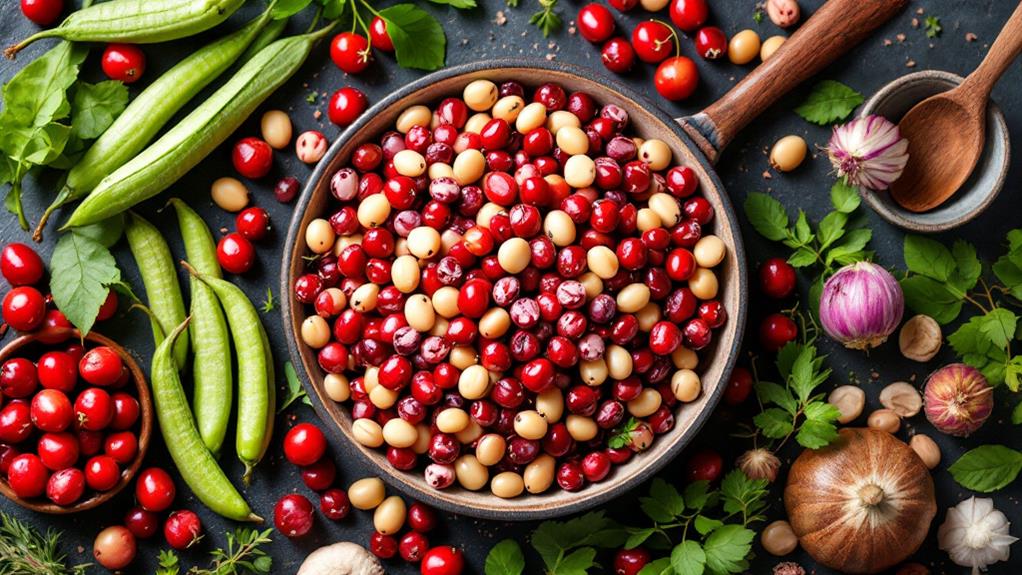
Cranberry beans, also known as borlotti, are a nutritional gem you won't want to miss. They're low in fat but rich in protein, fiber, vitamins, and minerals, making them perfect for a healthy diet. These beans support immune and digestive health, and they're excellent for managing diabetes and promoting heart health due to their low glycemic index and high fiber content. Cook them by boiling or use an Instant Pot for convenience, and improve dishes with their creamy texture and nutty flavor. Uncover how to incorporate them into meals and reveal their full potential.
Nutritional Profile
Cranberry beans pack a nutritional punch, making them a fantastic improvement to your diet. These beans are low in fat, with just 0.4 grams per serving, and they provide a robust 7.5 grams of protein, offering a great meat alternative. Cooked cranberry beans are rich in dietary fiber, delivering 8.0 grams per half-cup serving, which supports digestive health and can help maintain healthy cholesterol levels. In fact, when you consume one cup, you're benefiting from 17.7 grams of fiber, aiding weight management as well.
Beyond fiber and protein, cranberry beans boast a remarkable nutrient profile filled with fundamental vitamins and minerals. They deliver a substantial 49% of your Daily Value for vitamin B9 (folate), critical for cell function and DNA formation, particularly during pregnancy. These beans are also an excellent source of copper and provide magnesium, manganese, phosphorus, and zinc, which are essential for supporting multiple bodily functions.
Moreover, cranberry beans are rich in antioxidants, adding to their health benefits. By incorporating cooked cranberry beans into your meals, you're not just enjoying a delicious dish but also improving your nutritional intake considerably.
Health Advantages
Packed with nutrients, cranberry beans offer impressive health benefits that you shouldn't overlook. As an excellent source of folate, they provide 49% of your daily value per serving, which is essential for DNA synthesis and cell function. This is especially beneficial during pregnancy, supporting both maternal and fetal health. Furthermore, cranberry beans are rich in polyphenols, boasting 381.2 mg per serving. These powerful antioxidant properties help protect against chronic diseases like cancer and heart disease, improving your general health.
Cranberry beans also shine in promoting cardiovascular health due to their high dietary fiber content. With 8.0 grams of fiber per serving, they support your digestive system and help lower cholesterol levels, reducing the risk of cardiovascular disease. Their low glycemic index of 14 makes them a smart choice for diabetes management, preventing insulin spikes and providing sustained energy.
Regularly consuming cranberry beans can contribute to your longevity. Incorporating them into your diet daily is associated with a 16% decrease in all-cause mortality. So, not only do they improve your immediate health, but they also support a longer, healthier life. Don't miss out on these versatile beans!
Cooking Techniques
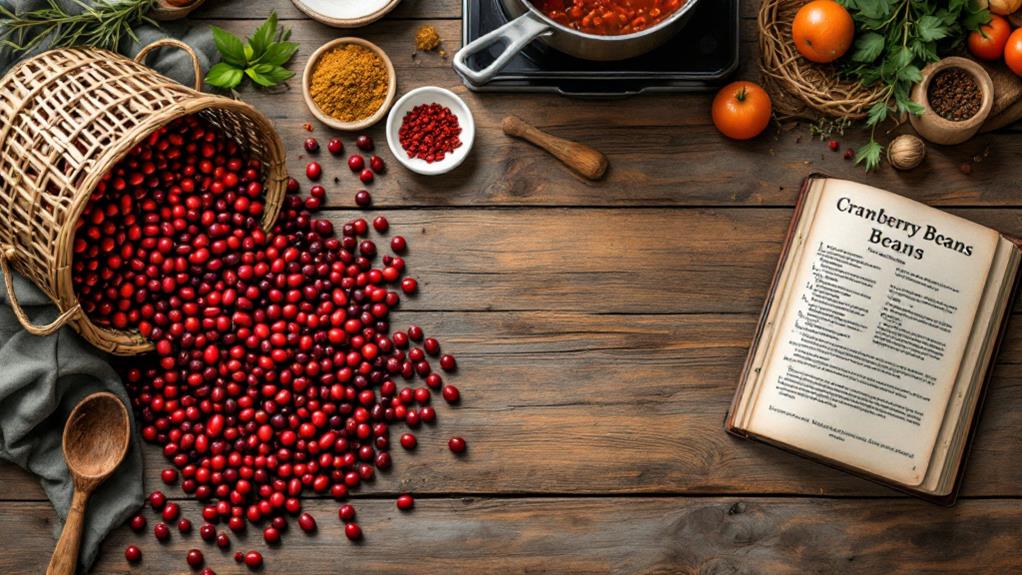
While the health benefits of cranberry beans are impressive, knowing how to cook them properly guarantees you can enjoy their nutritional value to the fullest. For fresh cranberry beans, a quick 25-minute boil in water is all you need. Dried beans take a bit longer, around 45 minutes, after soaking them overnight. If you're pressed for time, you can brine your dried beans in saltwater for four hours instead, which reduces cooking time and improves flavor.
Before you start, rinse the beans well, and once they're done cooking, don't forget to drain and rinse them again. To keep your boiled beans intact, simmer them gently. Adding seasonings like herbs and spices at the end of cooking assures peak flavor. You can even try unique combinations like cumin-coriander or garam masala for an extra kick.
For those who love convenience, an Instant Pot is a game-changer. It greatly cuts down the cooking time while still delivering perfectly tender beans. Don't forget to add salt to taste, and consider incorporating bold ingredients like tequila to boost your dish. Enjoy the versatile and nutritious cranberry beans in your favorite recipes!
Cultural Significance
In the lively tapestry of Italian and Portuguese cuisines, cranberry beans, also known as borlotti beans, play a starring role. These beans have been cherished for centuries, celebrated for their creamy texture and nutty flavor. Their culinary versatility makes them a vital ingredient in Mediterranean cuisine, where you'll find them in traditional recipes like pasta e fagioli and hearty bean stews. These dishes not only highlight the beans' delicious taste but also their cultural importance in these regions.
Historically, legumes like cranberry beans were a staple in ancient cultures due to their nutrient density. They could sustain entire populations, proving their worth in national dishes across the Mediterranean. With the rise of plant-based diets, you'll notice cranberry beans gaining even more prominence for their health benefits and nutritional value. They're packed with crucial nutrients, making them a wise choice for modern meals.
Today, you'll often spot cranberry beans at farmers' markets and specialty stores, appealing to both their unique appearance and rich flavor. As you investigate Mediterranean cuisine, appreciate how these humble beans have woven themselves into the cultural fabric, continuing to nourish and delight across generations.
Buying and Storing
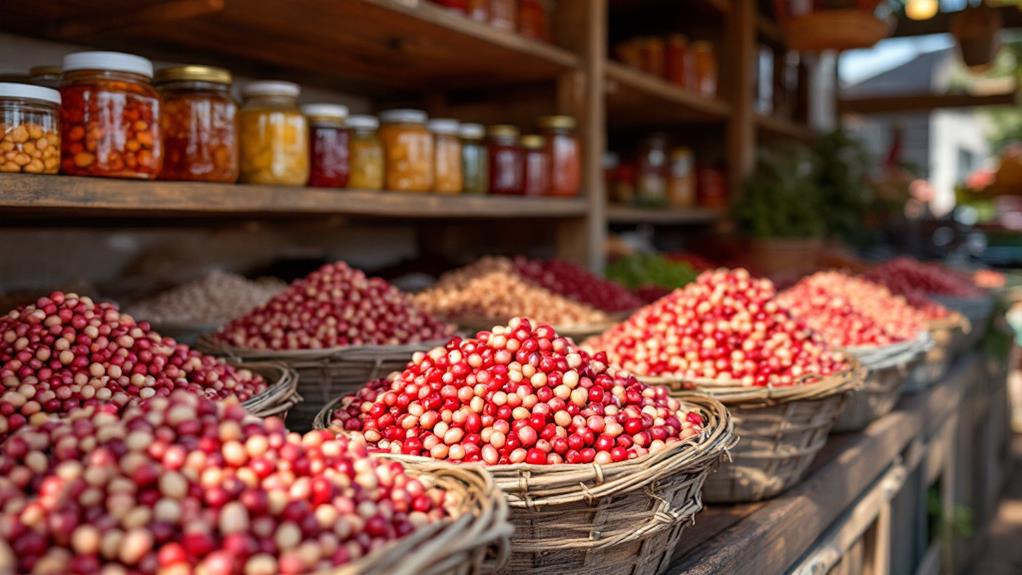
When selecting cranberry beans, you'll want to examine their size, shape, and color closely. Opt for beans that are consistent and free from splits, wrinkles, or insect holes, guaranteeing you're getting the best quality. When buying dried beans, always check the packaging date to make certain you're purchasing the most recently packaged product. This guarantees peak freshness and extends their shelf life.
Storing your cranberry beans properly is vital to maintaining their quality. Dried beans should be kept in an airtight container in a cool, dry place. This prevents moisture from causing spoilage and helps retain their nutritional value for years. For the best results, aim to use them within six months.
Fresh cranberry beans need to be refrigerated and consumed within four days. If you've cooked beans, store them in glass, porcelain, or stainless steel containers with tight covers. These can be refrigerated for up to five days or frozen for as long as six months.
To summarize:
- Check packaging date: Guarantees freshness.
- Store dried beans properly: Use an airtight container.
- Consume fresh beans quickly: Refrigerate up to four days.
- Preserve cooked beans carefully: Refrigerate or freeze.
Recipe Ideas
Exploring the versatility of cranberry beans reveals a myriad of delicious recipes that are both nutritious and satisfying. As a source of protein and fiber, cooked cranberry beans offer a creamy texture that improves different dishes. For a revitalizing side dish, toss cooked beans with olive oil, lemon juice, and fresh herbs. This simple salad not only tastes great but also supports a healthy lifestyle by providing fundamental nutrients that may help prevent chronic diseases.
Looking for more recipe ideas? Try crafting an autumn salad by combining cranberry beans with roasted butternut squash and broccoli rabe. This nutrient-dense meal packs a punch of vitamins and antioxidants. For a heartier option, incorporate cranberry beans into stews or chili. Their creamy texture and high protein content improve these comfort foods, making them both filling and nutritious.
Feeling adventurous? Whip up a creamy bean dip by pureeing cooked cranberry beans with garlic, olive oil, and spices. Spread it on bread or pair it with vegetables for a tasty snack. Finally, consider adding cranberry beans to traditional Italian dishes like pasta e fagioli. Their nutty flavor complements herbs and spices beautifully.
Expert Insights
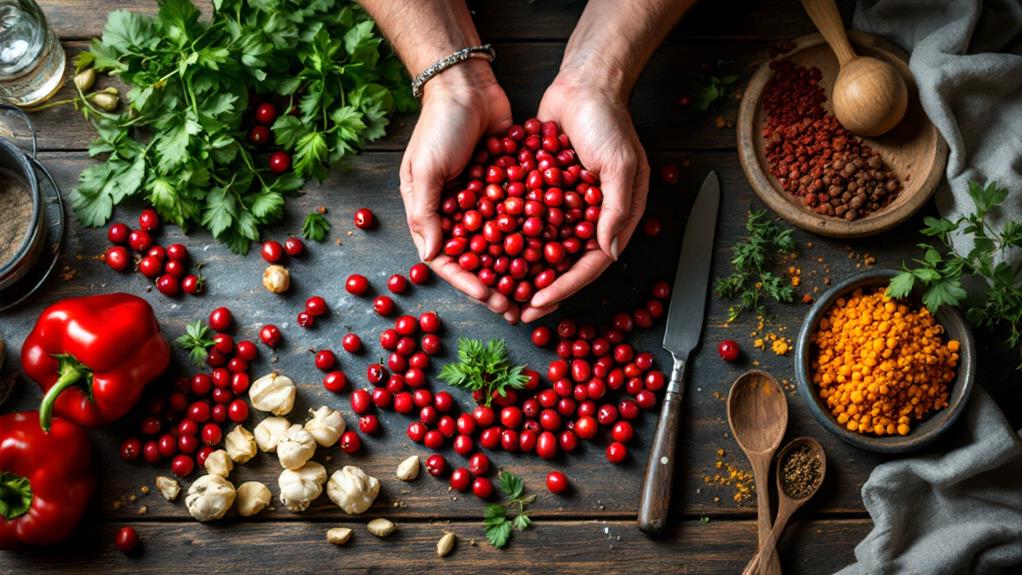
Someone once said that the secret to a great dish lies in understanding its ingredients, and cranberry beans are no exception. Experts highlight their impressive nutritional profile, making them a powerhouse for your complete health. With 23 grams of protein per 100 grams, cranberry beans are perfect for those aiming to increase their intake or seeking a meat alternative. Rich in vitamin B, particularly folate, they support crucial functions like DNA synthesis and cell function.
Dietitians often praise cranberry beans for their fiber content—24.7 grams per 100 grams—benefiting your digestive tract and reducing chronic disease risk. The polyphenols present, at 381.2 mg per serving, act as antioxidants guarding your immune system against threats like cancer and heart disease.
When incorporating these beans into your diet, consider these insights:
- Cook Time: Properly cooking a variety of beans, including cranberry, improves flavor and digestibility.
- Pairing: Use seasonings like sage and garlic to raise your dishes.
- Versatility: They're ideal in soups, salads, and stews.
- Plant-Based Diets: They're a superb protein alternative for vegetarians and vegans.
Understanding these elements can transform your cooking and health.

